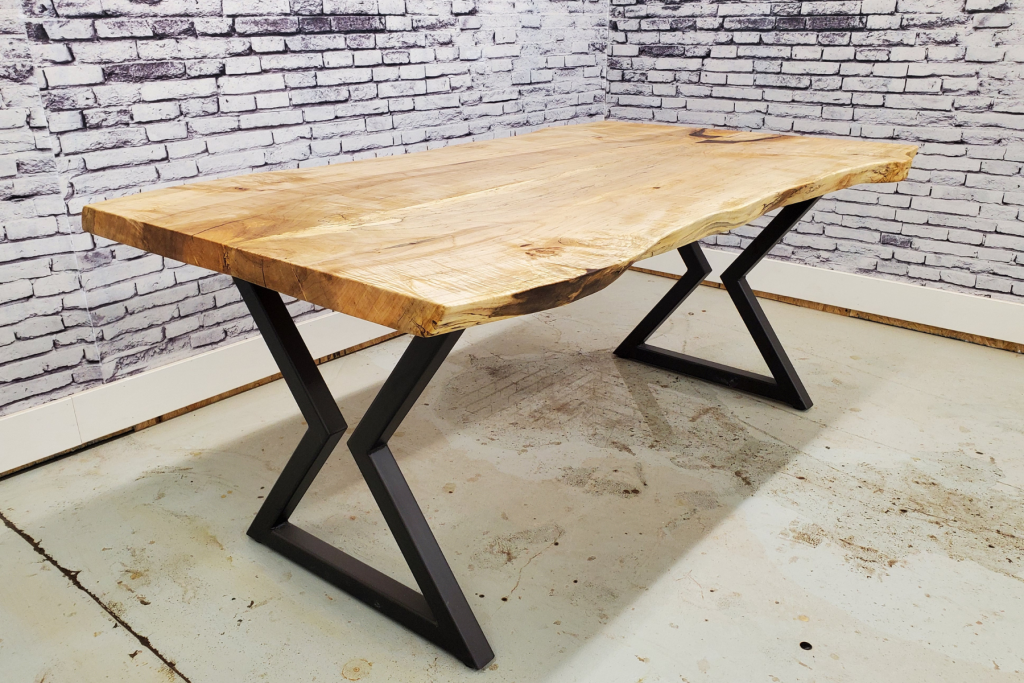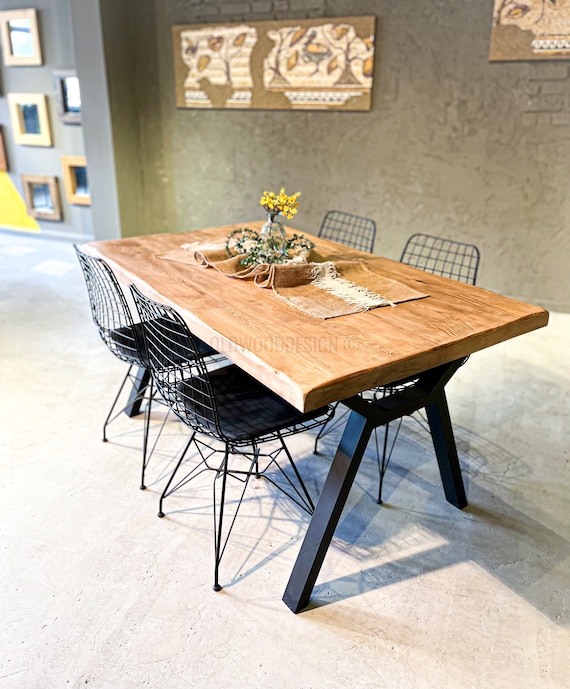What to Take Into Consideration When Picking Table Legs Timber for Your Home.
When picking wood for dining table legs, a number of crucial aspects require mindful consideration to make certain both capability and aesthetic allure. The kind of wood selected can substantially affect the table's toughness, stability, and total style, while the upkeep needs may impact long-lasting use.

Significance of Wood Type
When picking eating table legs, the option of timber kind plays an essential role in identifying both appearances and resilience. Various wood types provide differing degrees of weight, strength, and resistance to put on, which can substantially influence the capability and longevity of the table.
Conversely, softer woods like pine or poplar, while more economical, might not offer the same level of longevity and may call for more constant upkeep or substitute. The timber kind also influences the table's ability to withstand environmental variables such as moisture and temperature fluctuations. Additionally, the choice of wood can impact the simplicity of completing and tarnishing, which can be important for achieving the desired appearance.
Visual Considerations
The aesthetic charm of dining table legs significantly contributes to the total aesthetic of the dining area. Dining Table Legs Wood. When choosing wood for eating table legs, the grain color, pattern, and finish are crucial elements that can enhance or take away from the room's design. Different timber types display varying shades and appearances; for circumstances, oak presents a traditional appearance with noticeable grain, while walnut uses a rich, dark sophistication
Additionally, the form of the legs plays a critical duty in specifying the table's character. Smooth, minimal legs can create a contemporary feel, while a lot more elaborate, transformed legs stimulate conventional beauty. The style of the legs must harmonize with existing furniture and the general motif of the area, whether it be rustic, modern-day, or transitional.
It is also vital to think about just how the legs connect with other furnishings items, consisting of chairs and sideboards. A cohesive design not only elevates the dining experience however likewise contributes to the home's general aesthetic coherence. Ultimately, the selection of table legs should be a thoughtful decision that reflects personal preference while ensuring aesthetic consistency within the area.

Resilience and Stability
Durability and stability are important factors in the choice of table legs, as they straight affect the long life and safety of the furniture. When selecting timber for eating table legs, one must consider the inherent properties of different timber kinds. Hardwoods, such as oak, maple, and cherry, are frequently chosen for their stamina and resistance to use, making them appropriate for high-traffic dining areas.
Along with the kind of wood, the building technique likewise plays a considerable function in the general stability of the table. Legs that are solidly constructed, either via traditional joinery techniques or contemporary engineering methods, will provide enhanced assistance and protect against tottering. It is vital to review the thickness and design of the legs; thicker legs are generally extra secure and can stand up to higher weight.
Furthermore, the environmental problems in which the eating table will be used can influence resilience. Wood that has actually been effectively treated for moisture resistance will certainly do better in humid settings. Eventually, choosing the appropriate combination of resilient timber and steady construction will certainly make sure that your table continues to be a secure and practical centerpiece in your home for years ahead.
Maintenance Needs
Choosing eating table legs made from long lasting wood is simply the beginning; comprehending maintenance demands is similarly important to protect their appearance and performance. Different wood kinds need differing levels of treatment, so it is important to recognize what is needed for your certain choice.
Routine cleansing is essential; make use of check that a soft, damp fabric to remove dust and particles. Avoid extreme chemicals that can harm the finish. For timber coatings like varnish or lacquer, regular brightening with furnishings wax can enhance luster their website and give a protective layer versus scrapes.
Preventative steps are vital as well. Use rollercoasters and placemats to avoid direct contact with damp or hot products, which can warp or discolor the timber. Furthermore, think about positioning really felt pads under the legs to avoid scratches on your floor covering and lower use on the wood
Humidity control is another considerable aspect; maintaining a steady atmosphere assists to avoid bending and cracking. If your dining area is susceptible to changes in temperature level and wetness, think about making use of a humidifier or dehumidifier as needed.
Budget and Expense Aspects
When intending to buy eating table legs, recognizing spending plan and expense factors is crucial to make a notified decision. The kind of wood picked for the legs substantially influences the total cost.
Labor and workmanship also play an essential role in the general expense. Handmade or artisan-crafted legs may lug a premium price, reflecting the skill and time spent in their creation. It's important to assess the balance in between quality and expense; spending more in advance can bring about a longer-lasting product that needs much less upkeep over time.
Final Thought
In recap, selecting the suitable timber for eating table legs necessitates cautious factor to consider of numerous factors, including timber type, aesthetic charm, upkeep, durability, and budget Full Article constraints. The choice of hardwoods such as oak and maple can improve both stamina and visual charm, while softer woods may be much more cost-effective but less enduring. Ultimately, a well-informed decision relating to product choice will add to the overall functionality and longevity of the table, ensuring a valuable investment for the home.
When picking timber for dining table legs, numerous essential aspects necessitate mindful factor to consider to guarantee both functionality and aesthetic appeal.When choosing eating table legs, the choice of wood kind plays an important function in figuring out both aesthetics and toughness. When choosing wood for dining table legs, the grain pattern, coating, and color are pivotal elements that can detract or boost from the space's design. When picking wood for eating table legs, one should take into consideration the inherent residential properties of various timber types.In recap, selecting the ideal wood for eating table legs requires careful factor to consider of numerous elements, consisting of wood kind, aesthetic charm, maintenance, longevity, and budget restraints.
 Patrick Renna Then & Now!
Patrick Renna Then & Now! Elin Nordegren Then & Now!
Elin Nordegren Then & Now! Nancy Kerrigan Then & Now!
Nancy Kerrigan Then & Now! Andrew McCarthy Then & Now!
Andrew McCarthy Then & Now! Ricky Schroder Then & Now!
Ricky Schroder Then & Now!